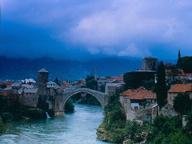Quiz Answer Key and Fun Facts
1. What does the term 'Yugoslavia' mean?
2. When did the country officially adopt the name 'Yugoslavia' for the first time?
3. Yugoslavia was created on the ruins of two empires. Name them!
4. The Yugoslav Committee and the Serbian government met in July 1917 and signed a declaration which called for a creation of a single democratic South Slav state. Where did they meet?
5. The type of government formed after World War I was what?
6. When did Yugoslavia become a federal state?
7. How many countries existed under the name of Yugoslavia ?
8. Which of these religious groups did NOT have a large number of followers in Yugoslavia?
9. How many official languages were recognized in Yugoslavia after World War II?
10. Serbs, Croats and Bosnians speak the same language.
11. The main feature that mutually differentiates Serbs, Croats and Bosnians is their respective religions.
12. When was first decreed that a term "Muslim" denotes a national, rather then a religious identity?
13. During World War II, in town of Jajce in western Bosnia, Tito decided to recognize these nations:
14. How many autonomous provinces did Serbia have before Kosovo broke away?
15. Yugoslavia was member of what military pact?
16. When was the city of Dubrovnik first included in Croatia?
17. During World War II, Yugoslavia was occupied by what countries?
18. After World War II, Yugoslavia was one of the founders of what international political grouping?
19. Where was the constitution founding the third Yugoslavia signed, consisting of the only two remaining republics, Serbia and Montenegro?
20. The main reason why some inner boundaries of republics were disputed at the time of secession was:
Source: Author
St Sava Jr.
This quiz was reviewed by FunTrivia editor
bloomsby before going online.
Any errors found in FunTrivia content are routinely corrected through our feedback system.

